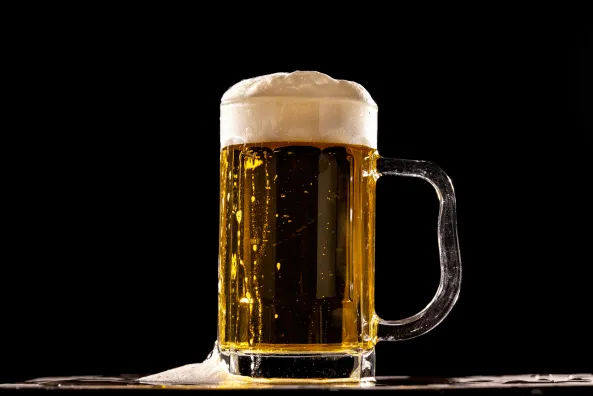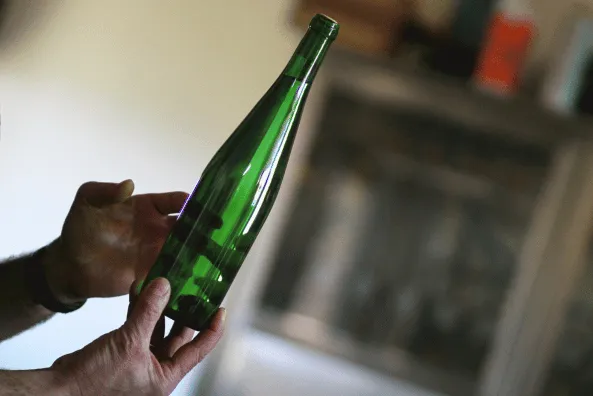Flat beer is a common issue that can ruin your drinking experience. In this blog post, we will explore how long it takes beer to go ‘flat,’ why it happens, and how to prevent it from happening.
We’ll discuss why leaving your beer sitting out too long can cause it to lose its carbonation and go flat. We’ll also investigate how aging impacts the flavor of your favorite beverages, such as when they become stale or spoil. Furthermore, we’ll explore techniques to maintain the freshness of your beers for longer periods.
Furthermore, we’ll explain why drinking expired or spoiled beer can be harmful to your health as opposed to hard liquor or wine, which tend not to spoil like most beers do after the expiration date has passed.
Table of Contents:
- Factors that Affect Beer’s Shelf Life
- The Role of Storage in Maintaining Beer Quality
- How Long Does It Take For Beer To Go Flat?
- What Happens When Beer Goes Bad?
- FAQs in Relation to How Long Does it Take for Beer to Go Flat
- Conclusion
Factors that Affect Beer’s Shelf Life
Storage Conditions That Impact Beer Freshness:
The storage conditions of beer can significantly impact its shelf life. When it comes to storing beer, the temperature is key. Storing your beer at the right temperature helps keep the flavor intact and prevents spoilage. For most beers, the ideal storage temperature is cool and out of direct sunlight or other heat sources. Keeping your brews cold also slows the oxidation process, which can give the beer an off-taste if left unchecked. Additionally, be sure to store bottles upright so that any sediment doesn’t settle into the liquid; this will help preserve freshness and maintain optimal carbonation levels for drinking enjoyment.
Ultimately though, how each type of beer ages depends on personal preference; some people prefer aged versions, while others enjoy fresher-tasting brews straight out of the bottle.
Proper storage is essential to maintain beer quality and maximize its shelf life. Therefore, understanding how temperature, light exposure, and other factors affect beer’s freshness can help you store your brews for optimal taste. Next, we’ll explore the role of storage in maintaining beer quality.
The Role of Storage in Maintaining Beer Quality

Proper storage is key to maintaining the quality and freshness of beer. Different types of beers require different storage conditions to remain at their best. The optimal temperature for storing beer and keeping out light are two important factors affecting a brew’s shelf life.
Temperature:
Temperature can drastically influence the shelf-life of your brew, from flavor to flatness. Regular beers should be stored at 45-55°F, while higher alcohol content varieties such as imperial stouts and barley wines require temperatures closer to 35-45°F to maintain their flavor profile. If you store your beer at temperatures above 55 degrees Fahrenheit, it could cause oxidation, making the taste stale faster than normal.
Light Exposure:
Light exposure can adversely affect the taste of your favorite brews, so it’s important to keep bottles away from direct sunlight and fluorescent lighting. It causes a chemical reaction with hops, creating flavors like skunkiness or grassiness that no one wants in their pint glass. Be sure to store all bottles away from direct sunlight and fluorescent lighting to stay fresher longer – especially if you’re planning on aging any bottle-conditioned ales (with live yeast still present).
Special Storage:
Unlike wine, hard liquor doesn’t age much once bottled, so there’s no need for special storage requirements other than keeping it away from direct sunlight and high temperatures since ethanol alcohol won’t break down over time as wine does during fermentation. However, some craft breweries produce barrel-aged spirits that benefit from being stored properly, just like any other type of booze.
When done right, proper storage can help significantly extend the shelf life of your favorite beverages without compromising flavor or aroma profiles. Ensure every sip tastes as good as when you opened the bottle. Whether you’re looking for optimal conditions for regular lagers or higher ABV styles like sours and IPAs – taking extra care with how you store your suds is essential if you want them to taste great now and later on down the road.
Proper storage of beer is essential for preserving its quality and taste. By understanding the optimal temperature, light exposure, and other conditions that affect shelf life, you can better understand how long it takes for beer to go flat.
How Long Does It Take For Beer To Go Flat?
Beer is a much-loved drink savored by many, yet it won’t remain fresh forever. Over time, beer can go flat due to exposure to air and light. But how long does it take for different types of beers to lose their carbonation?
Dependence on Alcocholic Content:
The longevity of beer varies based on the kind and alcoholic content. Regular beer has an average shelf life of three to six months when stored at optimal temperatures. The more ethanol alcohol a beer contains, the longer it will remain fresh – potentially up to nine months or beyond. Beers with lower levels of ethanol alcohol tend to go flat faster than those with higher concentrations since they don’t have as much natural preservative power.
Dependence on Storing Environment:
When storing your beer, keep it away from direct sunlight or fluorescent lighting that could cause oxidation, giving your brew a skunky taste. The optimal temperature for storing regular beers should be around 45-55 degrees Fahrenheit, while high-alcohol craft beers should be kept at colder temperatures (around 35-45 degrees). Keeping out light is especially important for bottled beer since UV rays can quickly break down hop compounds, causing them to become bitter and unpleasant tasting over time.
Dependence on the Fermentation Process:
Fermentation plays a pivotal role in how long a particular beer will stay fresh; ales, due to their fewer fermentation steps, tend not to age as well on the shelf as lagers designed for longer aging periods. Whereas lagers are designed to age, hard liquors such as whiskey and vodka will not improve over time and should be consumed promptly.
What Happens When Beer Goes Bad?
Unpleasant Flavor:
Unpleasant flavors such as skunkiness, musty aromas, and vinegar-like sourness may be present in beer that has gone bad. Common off-tastes associated with expired or stale beers include skunkiness, musty aromas, and vinegar-like sourness. Hops can become skunky, musty, or sour when exposed to air or light. The longer the beer has been stored improperly, the more pronounced these off-flavors will become.
Health Risks:
Consuming spoiled brew can also have health risks due to bacteria that may form in old beer. In high amounts, sour beer can cause food illness and unpleasant smells and flavors. Some brewers identify their products with expiration dates, but others don’t, so be cautious when drinking older beer.
Most craft beers should be stored cold (45°F–55°F) to retain quality. However, IPAs taste better and are somewhat warmer (about 60°F). Most ales and lagers go flat faster in direct sunlight because UV rays break down hop components.
Different types of beers age differently. If stored at cool temperatures out of direct light, heavier stouts last longer than lighter ales after opening.
On average, however, most craft beers will start going stale within a week or two after opening so it is always best practice to consume them quickly once opened rather than letting them sit around too long.
FAQs in Relation to How Long Does it Take for Beer to Go Flat
How long does it take beer to go flat?
Beer can become flat after around two days, depending on the variety and storage conditions. Generally, most beers lose their fizz within a day or two when left open in an ambient environment. Keep beer cool, dark, and sealed until it’s ready. Additionally, storing beer in a refrigerator can help slow the flatness process.
How quickly does beer lose carbonation?
Beer carbonation is a complicated procedure that necessitates numerous elements, such as the variety of beer and its packaging. Once opened, the beer’s carbonation will lessen after a few days. Consumption rate and container temperature can affect carbonation dissipation. Most beers will hold carbonation for three weeks if stored in cold conditions.
Why does beer go flat over time?
Beer goes flat over time due to the presence of dissolved carbon dioxide. The beer loses fizziness as CO2 molecules depart the solution and disperse into the air, lowering pressure inside the bottle or can. Light, heat, and agitation that release additional gas bubbles from the solution accelerate this process. To keep the beer’s effervescence, it should be stowed away in a cool and dim spot.
Does beer lose its alcohol content over time?
Yes, beer does lose its alcohol content over time. The rate of alcohol loss depends on several factors, such as temperature, light exposure, and oxygen contact. Beer ABV decreases as volatiles evaporates at higher temperatures. Oxidation breaks down these molecules, lowering the alcohol in the beverage. Oxygen interaction accelerates component breakdown, lowering ABV. Therefore, storing beer in a cool, dark place and limiting oxygen contact is important.
Conclusion
Beer is an incredible libation that can be relished in many forms. Knowing how long it takes for beer to go flat and what factors or conditions make it go stale is essential knowledge for any beer enthusiast, allowing them to enjoy their favorite brews better. By following the tips above and understanding the science behind going flat and stale beers, you will always have a perfectly carbonated pint ready whenever your heart desires.
Discover the best beer subscription services, reviews of different beers, and tips on how to keep your brew fresh with our blog. Get expert advice on brewing techniques and learn more about what makes a great pint!
Also Visit: Exploring the Differences Between Lager and Porter Beers


